Introduction to Temperature Sensors
Temperature sensors are devices that measure the temperature of a particular environment or object. They play a crucial role in various industries, including HVAC (Heating, Ventilation, and Air Conditioning), manufacturing, and scientific research. Temperature sensors come in different types, such as thermocouples, resistance temperature detectors (RTDs), thermistors, and infrared sensors. Each type has its own advantages and disadvantages, depending on the application and the required level of accuracy.
Types of Temperature Sensors
| Sensor Type | Advantages | Disadvantages |
|---|---|---|
| Thermocouple | Wide temperature range, low cost, fast response time | Lower accuracy, requires reference junction compensation |
| RTD | High accuracy, stability, linearity | Slower response time, higher cost, self-heating |
| Thermistor | High sensitivity, fast response time, low cost | Limited temperature range, non-linear, self-heating |
| Infrared | Non-contact measurement, fast response time, wide temperature range | Affected by surface emissivity, requires line of sight |
Importance of Accurate Temperature Measurement
Accurate temperature measurement is essential in many applications, especially in the HVAC industry. In a furnace, for example, the temperature must be precisely controlled to ensure efficient and safe operation. If the temperature is too low, the furnace may not provide sufficient heat, leading to discomfort for the occupants of the building. On the other hand, if the temperature is too high, it can cause damage to the furnace components and pose a safety risk.
External Sensor vs. Furnace Sensor
In a typical HVAC system, there are two main types of temperature sensors: the external sensor and the furnace sensor. The external sensor, also known as the outdoor sensor or ambient sensor, measures the temperature outside the building. This information is used by the HVAC system to adjust the heating or cooling output based on the outdoor conditions. The furnace sensor, on the other hand, measures the temperature inside the furnace itself. This sensor is used to monitor and control the operation of the furnace, ensuring that it maintains the desired temperature and operates safely.
Factors Affecting Temperature Difference
There are several factors that can contribute to a temperature difference between the external sensor and the furnace sensor:
-
Location: The external sensor is typically located outside the building, exposed to the elements, while the furnace sensor is located inside the furnace, protected from external factors.
-
Response time: The external sensor may have a slower response time compared to the furnace sensor, as it is exposed to larger temperature fluctuations and has to measure the temperature of a larger area.
-
Calibration: If either sensor is not properly calibrated, it can lead to inaccurate readings and a temperature difference between the two sensors.
-
Sensor type: Different types of sensors may have different accuracies and response times, which can contribute to a temperature difference.

Consequences of Temperature Sensor Difference
A significant temperature difference between the external sensor and the furnace sensor can have several consequences:
-
Inefficient operation: If the HVAC system is receiving inaccurate temperature data, it may not adjust the heating or cooling output correctly, leading to inefficient operation and increased energy consumption.
-
Discomfort: Inaccurate temperature control can result in discomfort for the occupants of the building, as the indoor temperature may not be maintained at the desired level.
-
Safety risks: In extreme cases, a large temperature difference can indicate a problem with the furnace, such as overheating, which can pose a safety risk if not addressed promptly.
Minimizing Temperature Sensor Difference
To minimize the temperature difference between the external sensor and the furnace sensor, several steps can be taken:
-
Regular calibration: Both sensors should be regularly calibrated to ensure accurate readings. This can be done by a qualified HVAC technician using a certified reference thermometer.
-
Proper installation: The external sensor should be installed in a location that is representative of the outdoor temperature, away from direct sunlight, heat sources, or other factors that can influence the reading. The furnace sensor should be installed according to the manufacturer’s specifications.
-
Matching Sensor Types: Using the same type of sensor for both the external and furnace measurements can help minimize differences in accuracy and response time.
-
Monitoring and maintenance: Regular monitoring of the HVAC system and temperature readings can help identify any issues early on. Proper maintenance, such as cleaning the sensors and replacing them when necessary, can also help ensure accurate readings.
Frequently Asked Questions (FAQ)
1. What is the ideal temperature difference between the external sensor and the furnace sensor?
Ideally, the temperature difference between the external sensor and the furnace sensor should be minimal, typically within a few degrees Celsius or Fahrenheit. A larger difference may indicate an issue with one or both sensors, or a problem with the HVAC system.
2. How often should temperature sensors be calibrated?
The frequency of calibration depends on the specific application and the requirements of the industry. In general, temperature sensors should be calibrated at least once a year, or more frequently if required by regulations or if the sensors are exposed to harsh conditions.
3. Can I calibrate the temperature sensors myself?
While it is possible to perform a basic calibration of temperature sensors using a reference thermometer, it is recommended to have a qualified HVAC technician perform the calibration. They have the necessary expertise, tools, and certified reference thermometers to ensure accurate calibration.
4. What should I do if I notice a significant temperature difference between the external sensor and the furnace sensor?
If you notice a significant temperature difference between the sensors, first check for any obvious issues, such as damage to the sensors or obstructions blocking the airflow. If no obvious issues are found, contact a qualified HVAC technician to diagnose and resolve the problem.
5. Can using different types of sensors for the external and furnace measurements cause a temperature difference?
Yes, using different types of sensors can contribute to a temperature difference, as each type of sensor has its own accuracy, response time, and other characteristics. To minimize this issue, it is recommended to use the same type of sensor for both the external and furnace measurements whenever possible.
Conclusion
Temperature sensors play a critical role in ensuring the efficient and safe operation of HVAC systems, particularly furnaces. The external sensor and the furnace sensor work together to provide accurate temperature data, allowing the system to adjust the heating or cooling output as needed. However, a temperature difference between these two sensors can lead to inefficient operation, discomfort, and even safety risks.
To minimize the temperature difference, regular calibration, proper installation, matching sensor types, and ongoing monitoring and maintenance are essential. By taking these steps, HVAC system owners and operators can ensure that their systems are running optimally, providing a comfortable and safe environment for building occupants while minimizing energy consumption and costs.
As technology continues to advance, new types of temperature sensors and monitoring systems are being developed, offering even greater accuracy, reliability, and ease of use. By staying informed about these advancements and working with qualified HVAC professionals, building owners and managers can ensure that their HVAC systems are equipped with the best available technology for accurate temperature measurement and control.
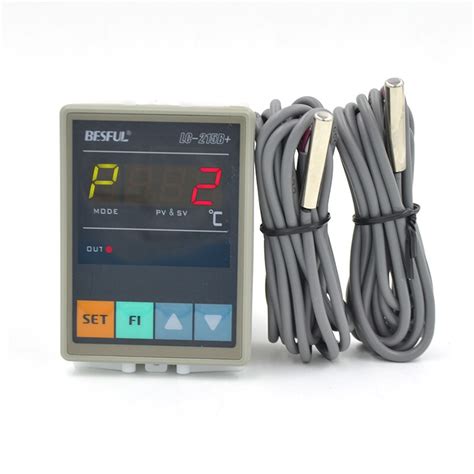
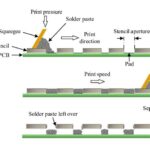
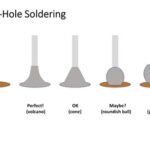

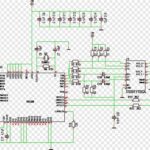
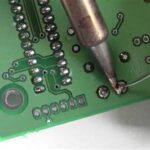
Leave a Reply